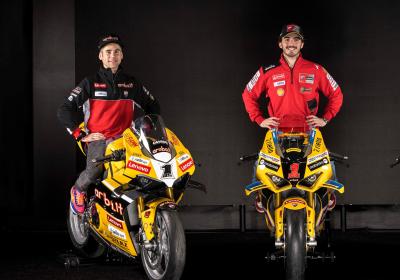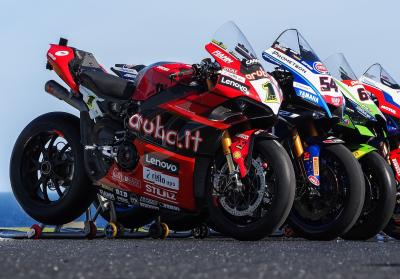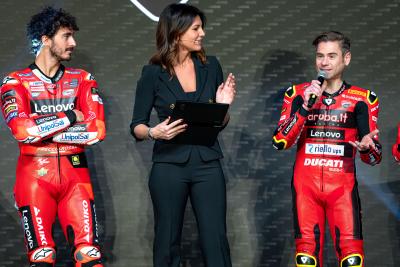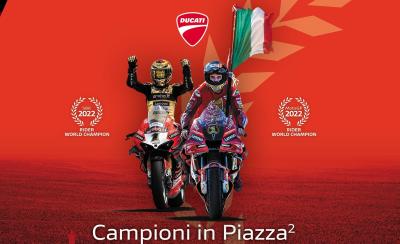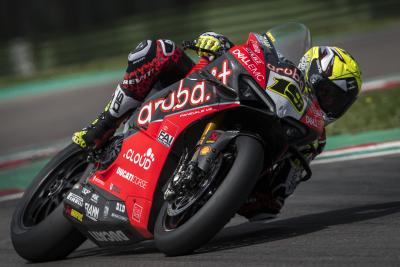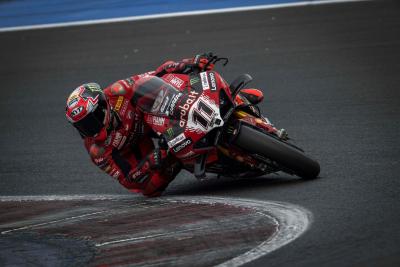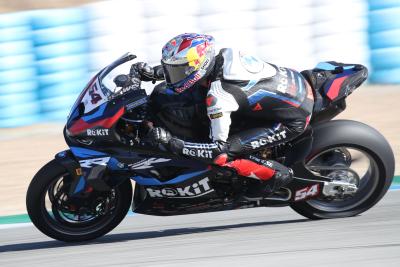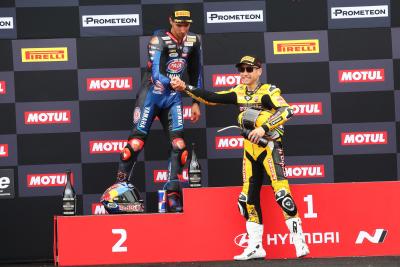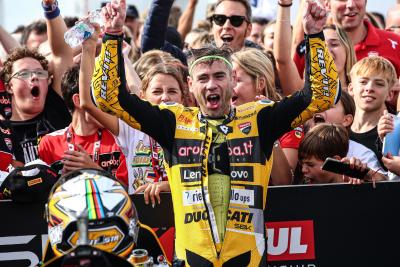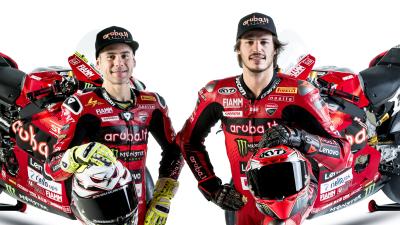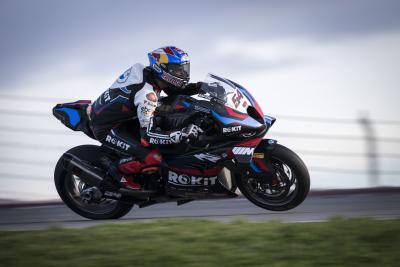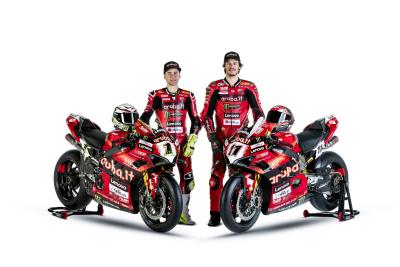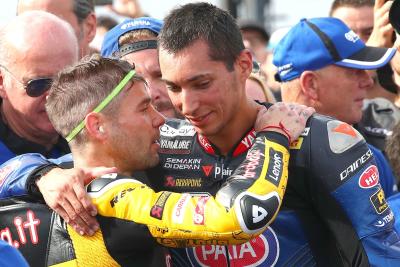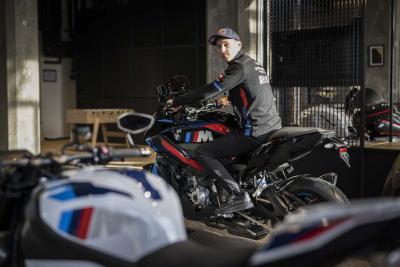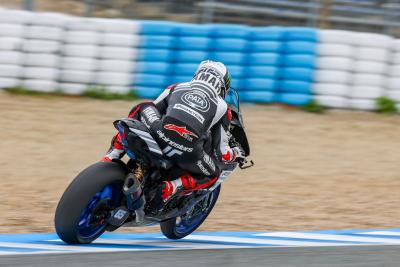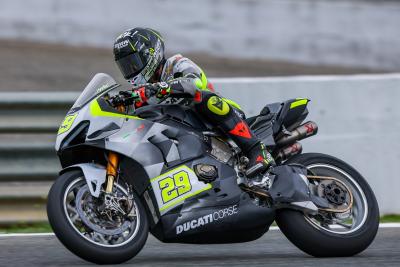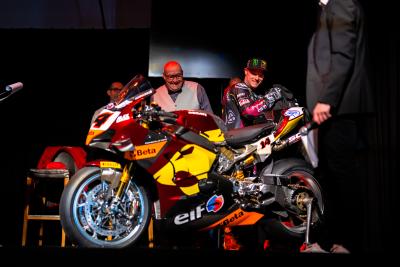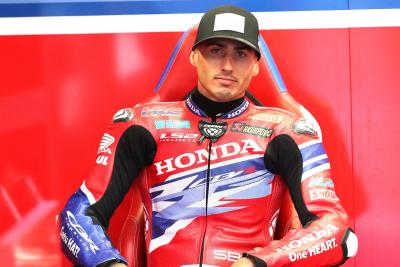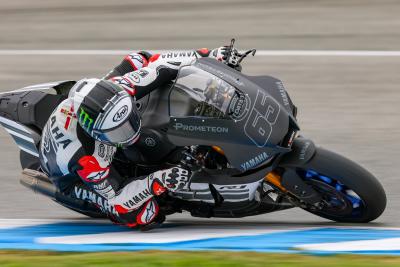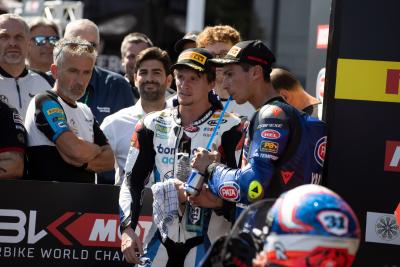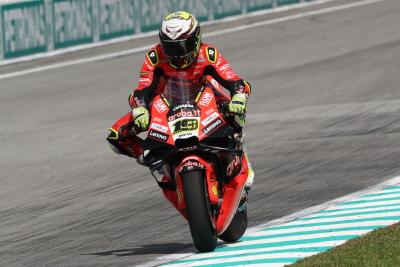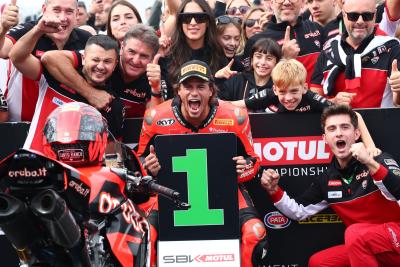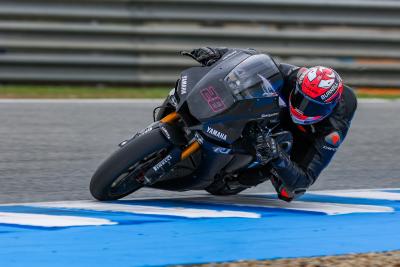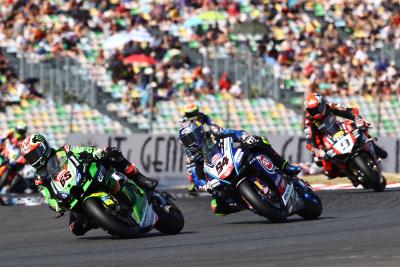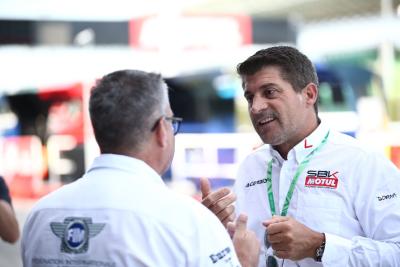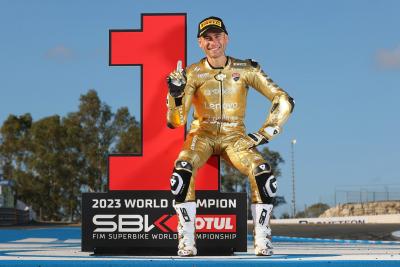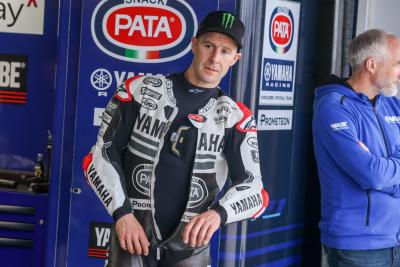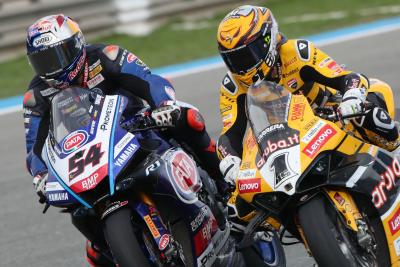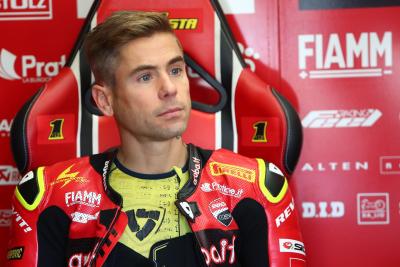Alvaro Bautista
Personal Information

About Alvaro Bautista
Born on the 21st November 1984 in Talavera de la Reina, Bautista had the racing bug at just three years old when his mechanic father built him a little bike to ride around.
Career Stats
Latest News
Full Biography
Born on the 21st November 1984 in Talavera de la Reina, Bautista had the racing bug at just three years old when his mechanic father built him a little bike to ride around.
Five years later he competed in his first minimoto race and despite being much younger and smaller than most of his competitors he finished runner up in the Madrid Minimoto Championship in his second season. He then went on winning the Championship three years in a row and simultaneously raced in the 50cc Aprilia Cup in 1997 where he claimed his first podium, finishing the season in 6th place.
Another year in the 50cc Aprilia Cup saw him taking two more podiums and ending the season in third place when Alberto Puig chose him from over 4000 applicants for the famous Movistar Activa Joven Cup in 1999. He finished his first year in a respectable 5th place, in front of Dani Pedrosa, earning him a second year in the Cup and a spot as a back-up rider for the 125cc Spanish Championship.
However, a severe injury in 2000 set him back and despite taking one podium in the Movistar Cup, he only finished the season in ninth place. More misfortune was to come for Alvaro in 2001 when he entered the 125cc Spanish Championship with Team Belart which had to fold halfaway through the season due to financial reasons. But he was spotted by Manuel Morente who signed him up for the remaining races of the season and offered him a new team for the following year.
In 2002 Alvaro had his first proper season in the 125cc Spanish Championship, riding under the colours of the Atlético de Madrid team, and fighting for the title with Héctor Barbera until the final round at Valencia where he set pole position but finished fifth after crashing in the race, securing him the runner-up spot in the championship.
That season also saw him race against international competition for the first time. In the 125cc European Championship he scored a podium in Assen and a fourth place in Hungary while he also competed in four 125cc World Championship races as a wildcard with Team Atlético de Madrid.
Alvaro’s connection with football was deepened in 2003 when Dutch footballer Clarence Seedorf signed him up for the newly found Seedorf Racing Team, to compete his first full season in the 125cc World Championship. He finished his debut year in 20th place overall with 31 points, his best finishes being a fourth place at Phillip Island and a sixth place at Valencia. The same year he was also crowned Spanish Champion with two races to go and after an extremely dominant season, never being off the podium and with five consecutive pole-to-victory finishes.
In 2004 he continued with Seedorf Racing in the 125cc World Championship, taking a creditable seventh place overall after finishing on the podium four times, with a second place at Donington Park and thirds at Qatar, Malaysia and Valencia. With the main contenders leaving the class he started the 2005 season as one of the 125cc title favourites, but with a switch from Aprilia to Honda it proved to be a year to forget a different team structure, crashes and mechanical failures made Alvaro struggle through the season and despite several great showings of his talent he ended the year in a lowly 15th place.
After difficulties to get out of his contract with Seedorf Racing before the 2006 season, Alvaro joined the ranks of Jorge Martinez’ MVA Aspar Team extremely late. Already having a complete team with four riders set up, Aspar went to great length to get another bike, mechanics and sponsors for Alvaro who he tried to sign up since his national championship win in 2003.
Nonetheless, Alvaro more than made up for that effort by showing a strong preseason form and subsequently winning his first 125cc race at the first championship stop in Jerez, leading the race from start to finish. Another dominating win followed in Qatar, making Alvaro the first 125cc rider in four years to win back-to-back races. His domination continued all throughout the year, always leading the championship table with a great margin and finally becoming 125cc World Champion in Australia, three races before the end of the season.
Staying with the Aspar Team he moved up to 250cc in 2007, adapting very fast to the new class. He claimed his first 250cc podium in the season’s second race in Jerez and continued to be a regular podium visitor throughout the season. With wins in Mugello and Estoril he finished his first 250cc season in fourth position overall and won the FIM “Rookie of the Year” Award.
After the three main contenders left the class Alvaro was once again set as the main title favourite for 2008, but bad luck and mechanical problems in the first half of the season hampered his chances considerably.
Despite being the fastest rider in qualifying and the races, he was only eighth in the standings after the first six races of the season, 65 points behind the leader. But with ten consecutive podiums and a total of four wins, Alvaro moved up the ranks to finish the season in second place.
With the 250GP class set to be replaced by Moto2 in 2010, Bautista worked on securing a graduation to the MotoGP class instead, eventually signing a deal with Rizla Suzuki to ride alongside the experienced Loris Capirossi.
With ex-250 rivals Marco Simoncelli, Hiroshi Aoyama and Hector Barbera also stepping up in 2010, Bautista had to contend with fierce rivalry throughout the season, but while he was the only rider of the quartet to be getting full factory support, the GSV-R initially struggled to be regularly competitive in either his or Capirossi’s hands.
An injury at Le Mans didn’t help his cause, consigning Bautista to lowly mid-field positions for the following three races, but an unexpected run to fifth place in Barcelona gave his reputation a substantial boost. Going on to match that result at Sepang, Bautista proved a frequent top ten visitor during the second-half of the year, hauling him up to 13th overall, well ahead of Capirossi.
Retained to ride Rizla Suzuki’s sole entry in 2011, Bautista was one of the stars of pre-season testing, but a high-speed crash during the opening weekend in Qatar left him with a broken femur, sidelining him for two rounds. Though he returned for round three, it took time for Bautista to regain his full form.
Eventually, his results improved with a fifth at Silverstone, while top eight results at Sachsenring, Indianapolis, Misano and Aragon earned him a boost. However, a trio of DNFs in the final three events including a fall whilst running third in Japan would restrict him to 13th overall again.
With Suzuki stalling on whether to commit to MotoGP beyond 2011, Bautista set his sights on a move for 2012, with rumours linking him with Tech 3 Yamaha and LCR Honda. In the end, the tragic death of Simoncelli afforded Bautista the opportunity to assume his available ride at Gresini Honda, the Spaniard announced with the team just in time for the post-season tests.
Becoming Gresini’s sole entry into the main MotoGP class (with team-mate Michele Pirro competing on a CRT machine), Bautista endured a fairly tough start to the year, the unexpected peak of a pole position and fourth place finish at Silverstone negated by a high-profile clash with Jorge Lorenzo at Assen and a struggle to get on terms with the Tech 3 Yamahas.
However, as the season wore on, Bautista’s confidence on the RC213V would grow and a poignant podium finish at Misano the circuit now bearing Simoncelli’s name would prove one of the year’s most endearing stories.
Consolidating that result with another podium at Motegi, Bautista’s impressive consistency (top six finishes in each of the final eight races and just the one DNF all season) would see him stealthily ascend to fifth overall, ahead of Valentino Rossi and Cal Crutchlow.
Usefully, the upturn in form would coincide with an agreement to keep Bautista at Gresini in 2013, despite mumblings that he could be replaced by World Superbike front runner Jonathan Rea.
An indifferent start to the season and an unfortunate clash with Valentino Rossi in Italy aside, Bautista was arguably the strongest satellite rider during the second-half of the 2013 season, moving him to within one place and 17 points of top satellite rider Cal Crutchlow (fifth overall).
Between the German Grand Prix and the end of the season, Bautista finished outside the top five just once in eleven consecutive races and remained on the Gresini Honda for 2014.
Much like Stefan Bradl, Bautista had something to prove during his third season on Honda machinery in 2014, but his lack of comfort on the Showa suspension-equipped Gresini bike would see him flounder on several occasions.
Three DNFs in the opening three races set the tone for Bautista's season and though he turned in an unexpected podium at Le Mans, it was the sole peak of an otherwise dismal year. The fact he finished just eight points ahead of his rookie team-mate Scott Redding on the production Honda spoke volumes.
2015 was very much a fresh start Bautista, who stuck with Gresini as the factory morphed into the official Aprilia team. With the project brought a year ahead of schedule, the team continued to run Superbike-based machinery and, while it was hardly a season to savour for the Spaniard, the green shoots of progress were arguably evident towards the close.
For a rider criticised for his inconsistencies in previous years, Bautista proved exactly what Aprilia needed by bringing the bike home in all but the first race of the year, picking up digits in 13 of the 18 races. A best finish of tenth didn’t steal any headlines but lays a solid foundation for 2016 when the all-new RS-GP will arrive.
Latest Photos
